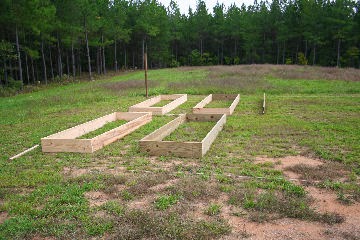Pathway Size: Planning Your Paths
Materials for the Pathways
- Pebbles – Pros: Attractive looking. Water drains well. Prevents weeds. Cons: Expensive. Can be hard to push heavy wheelbarrows through. May reflect undesirable amounts of heat.
- Mulch – Pros: Attractive. Easier to push wheelbarrows through than pebbles. Prevents weeds. Cons: May harbor plant diseases or microbes. Breaks down and must be replaced over time.
- Grass – Pros: Natural. Can use existing grass. Cuts down on heat. Cons: You have to mow it frequently. If allowed to go to seed, can spread grass or weed seeds into vegetable beds.
- Collection of Raised Bed Vegetable Garden Links
- Replenishing Raised Bed Garden Soil
- How to Build a Garden Using Raised Beds






[…] Paths for a Raised Bed Garden […]